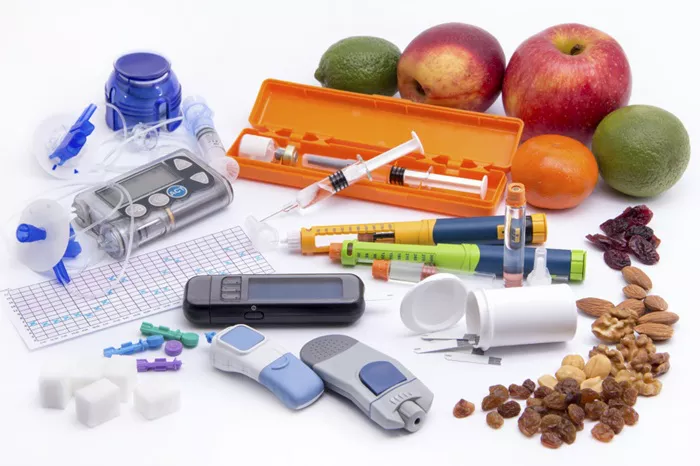Diabetes is a chronic condition that affects how your body processes blood sugar (glucose). There are two main types of diabetes type 1 and type 2. While they have distinct causes and treatments they also share several similarities. Understanding these similarities can help in managing and preventing complications associated with both types. In this article we will explore how type 1 and type 2 diabetes are similar their symptoms risk factors complications and management strategies.
What Is Diabetes
Definition of Diabetes
Diabetes is a condition where the body either doesn’t produce enough insulin or can’t use insulin effectively. Insulin is a hormone that helps glucose enter your cells to be used for energy. When this process is disrupted glucose builds up in the blood leading to high blood sugar levels.
Types of Diabetes
There are two main types of diabetes
- Type 1 Diabetes An autoimmune condition where the body attacks and destroys insulin-producing cells in the pancreas.
- Type 2 Diabetes A condition where the body becomes resistant to insulin or doesn’t produce enough insulin.
Similarities Between Type 1 and Type 2 Diabetes
High Blood Sugar Levels
Both type 1 and type 2 diabetes result in high blood sugar levels. This is because the body either doesn’t produce enough insulin (type 1) or can’t use insulin effectively (type 2).
Symptoms
The symptoms of type 1 and type 2 diabetes are often similar and can include
- Increased Thirst Feeling unusually thirsty even after drinking plenty of fluids.
- Frequent Urination Needing to urinate more often especially at night.
- Increased Hunger Feeling hungry even after eating.
- Fatigue Feeling unusually tired and lacking energy.
- Blurred Vision High blood sugar levels can affect the lenses of the eyes.
- Slow-Healing Wounds Cuts and sores take longer to heal.
- Frequent Infections Increased risk of infections such as urinary tract infections and skin infections.
Risk Factors
While the primary causes differ both types of diabetes share some common risk factors
- Family History A family history of diabetes increases the risk for both types.
- Age The risk of developing diabetes increases with age.
- Obesity Excess body weight is a significant risk factor for type 2 diabetes and can also complicate the management of type 1 diabetes.
- Lifestyle Factors Poor diet lack of exercise and smoking can increase the risk of complications in both types.
Complications
Both type 1 and type 2 diabetes can lead to serious complications if not managed properly. These complications include
- Cardiovascular Disease Increased risk of heart attack stroke and high blood pressure.
- Nerve Damage (Neuropathy) Can cause pain tingling and loss of sensation especially in the extremities.
- Kidney Damage (Nephropathy) Can lead to kidney failure and the need for dialysis or a kidney transplant.
- Eye Damage (Retinopathy) Can cause vision problems and even blindness.
- Foot Damage Poor circulation and nerve damage can lead to foot ulcers and infections.
- Skin Conditions Increased risk of bacterial and fungal infections.
Management Strategies
Managing both type 1 and type 2 diabetes involves similar strategies
- Blood Sugar Monitoring Regularly checking blood sugar levels is crucial for both types.
- Healthy Diet A balanced diet rich in fruits vegetables whole grains lean proteins and healthy fats is important.
- Regular Exercise Physical activity helps improve insulin sensitivity and overall health.
- Medications Both types may require medications to manage blood sugar levels. Type 1 diabetes always requires insulin while type 2 diabetes may require insulin or other medications.
- Regular Check-Ups Regular visits to the doctor for monitoring and managing complications are essential.
Differences Between Type 1 and Type 2 Diabetes
Causes
The primary causes of type 1 and type 2 diabetes are different
- Type 1 Diabetes An autoimmune condition where the body attacks insulin-producing cells in the pancreas.
- Type 2 Diabetes A condition where the body becomes resistant to insulin or doesn’t produce enough insulin often due to lifestyle factors.
Onset
The onset of the two types of diabetes is different
- Type 1 Diabetes Usually diagnosed in children and young adults.
- Type 2 Diabetes Typically diagnosed in adults especially those over 45.
Treatment
The treatment approaches for type 1 and type 2 diabetes differ
- Type 1 Diabetes Always requires insulin therapy.
- Type 2 Diabetes May be managed with lifestyle changes oral medications or insulin therapy.
Preventing Complications
Blood Sugar Control
Maintaining good blood sugar control is crucial for preventing complications in both types of diabetes. This involves regular monitoring a healthy diet regular exercise and taking medications as prescribed.
Healthy Lifestyle Choices
Making healthy lifestyle choices can help prevent complications
- Healthy Diet Focus on whole unprocessed foods and limit sugary drinks and unhealthy fats.
- Regular Exercise Aim for at least 150 minutes of moderate-intensity exercise per week.
- Weight Management Maintaining a healthy weight can improve blood sugar control.
- Quit Smoking Smoking increases the risk of complications from diabetes.
Regular Check-Ups
Regular medical check-ups are important for monitoring and managing complications. Your doctor can perform tests to check for early signs of complications and recommend preventive measures.
Conclusion
Type 1 and type 2 diabetes share several similarities including symptoms risk factors complications and management strategies. Understanding these similarities can help in managing and preventing complications associated with both types. By making healthy lifestyle choices staying informed and seeking medical advice when needed you can reduce your risk of complications and improve your overall well-being. If you have any concerns about your health or experience symptoms of diabetes don’t hesitate to consult a healthcare professional. Early diagnosis and treatment are key to preventing complications and living a healthy life.
Related topics:
Weight Loss With Ozempic And Similar Drugs: The Challenge Of Long-Term Use
What Type Of Disorder Is Depression?
Recreational Exercise Linked To Lower Type 2 Diabetes Risk, Study Finds


